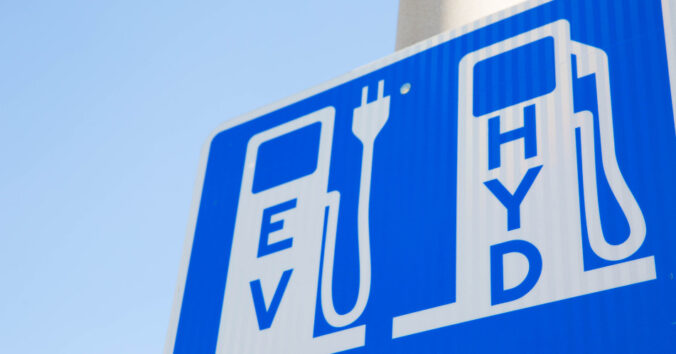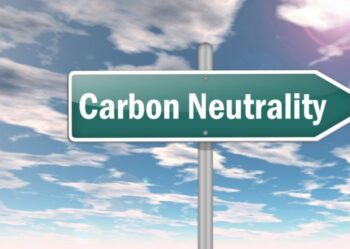What are the different alternative to the electric vehicle?

The electric vehicle is often considered as one of the most environmentally friendly modes of transportation. The majority of European car manufacturers have already begun the process of electrifying their product ranges as an alternative. However, there are other alternatives to the electric vehicle that we do not necessarily think of, but which are also considered “green”. What are they?
The natural gas vehicle: a responsible way to travel
A vehicle is considered clean when it produces a low amount of polluting emissions. This is generally the case for vehicles that use fuels other than gasoline or diesel.
The natural gas vehicle (NGV) thus appears as an ecological and alternative mode of travel to the electric vehicle. As its name indicates, the NGV runs on natural gas, which is the same gas you use every day to heat your home, to cook….
This primary energy does not require any particular transformation.
Natural gas is an interesting choice for the environment for several reasons:
- First of all, it allows a 25% reduction in CO2 emissions compared to gasoline, and a 95% reduction in fine particles harmful to the environment. The natural gas vehicle does not emit black smoke and very few fine particles.
- Moreover, the transport of natural gas and its distribution are ensured by a network of pipes, which makes it possible to limit considerably the indirect pollution related to this process.
- It is also important to know that natural gas is burned relatively slowly, which significantly reduces vibrations, and therefore the noise generated by the engine. This makes for a more comfortable and flexible driving experience than with conventional fuels.
- In addition, natural gas also allows you to make considerable savings. It is much cheaper than conventional fuels such as gasoline or diesel: one kilogram of compressed city natural gas costs 10 to 30% less than a liter of diesel.
- In terms of maintenance and upkeep, the natural gas engine generally requires less expense than combustion engines.
- It also provides a very satisfactory range, between 400 and 500 km on a full tank.
- As far as recharging your vehicle is concerned, this can be done through the refueling stations present in the country.
It should be noted that this natural gas has a 100% renewable version today, called BioNGV. It is obtained through methanization and allows to drive in an ecological way. So they are pro & cons to make sure its an efficient alternative to the EV.
BioNGV or Biomethane: a 100% sustainable energy?
Biomethane or BioNGV is an energy with the same characteristics as conventional natural gas. However, it is obtained from a renewable resource: the methanization of organic waste from various industries such as food processing, catering, farming …
This process makes it possible to reduce the consumption of chemical fertilizers (and thus the pollution which is related to it) thanks to the use of organic matter. It also promotes the development of intermediate crops.
BioNGV is almost neutral: the CO2 released at the exhaust is equivalent to the CO2 consumed by the methanized plants during the biofuel manufacturing process.
When used as a liquid fuel, it has a carbon footprint 80% lower than conventional fuels during its production, according to ADEME (French Environment and Energy Management Agency).
Indeed, it generates almost no fine particles, odor or black smoke and very few nitrogen oxides. It also has a good autonomy, from 400 to 700 km.
BioNGV is also interesting to note that in addition to driving, BioNGV can be used at home on a daily basis. It is therefore a very good alternative to the electric vehicle because it is very environmentally friendly and promising for the future.
Moreover, many cities today use natural gas and biomethane for their public transportation system in order to preserve the environment and the health of citizens. It is therefore a key energy to meet the challenges of global warming.
But that’s not all. Another energy that is becoming more and more important today is hydrogen, which allows people to drive in an environmentally friendly way. Is it a good alternative to the EV ?
The hydrogen vehicle: an alternative for cleaner driving
The hydrogen vehicle is often compared to the electric vehicle. Both types of vehicles do not have an internal combustion engine and run on electricity. However, their energy source is not the same.
The major difference between the hydrogen vehicle and the electric vehicle is that the hydrogen vehicle produces the electricity it needs. It does not use energy supplied by an integrated battery.
More concretely, to operate, hydrogen vehicles draw their energy from a fuel cell powered by this gas. This hydrogen is stored in a tank (located in the vehicle) and then fed into the fuel cell, which will provide electricity to drive the vehicle, without generating toxic exhaust emissions. The only by-product of the whole process is water and heat, both of which are natural resources.
As for recharging, these vehicles simply need to be filled with hydrogen from a pump.
The only emission generated would be H2O (commonly known as water).
A hydrogen vehicle can travel up to 600 km with a full tank at a service station, compared to a maximum of 400 to 500 km for an electric vehicle.
Moreover, the recharging of the hydrogen vehicle is done in a few minutes only, contrary to an electric vehicle, for which it can take much more time.
Thus, the hydrogen vehicle allows not only a better autonomy but also a shorter recharging time.
However, the hydrogen vehicle faces a major concern: obtaining hydrogen.
Although it is one of the most common elements in the universe. It cannot be used in its clean state to power our vehicles.
Indeed, hydrogen today is mainly obtained by two main processes: steam reforming and electrolysis.
- Steam reforming is a reaction between steam and a fossil fuel (oil, coal, natural gas) in which the steam breaks the hydrocarbon molecules to release hydrogen. This is a process that results in the production of CO2.
- The other process is the electrolysis of water. It consists in breaking down water into oxygen and/or hydrogen. The principle seems simple, but it requires the mass production of gigantic electrolysers, which are themselves large consumers of metals or toxic products that are harmful to the planet. Thus, it is now necessary to find other ways to extract hydrogen in order to limit atmospheric pollution.
Biofuels: resources compatible with the preservation of the environment?
Biofuels are fuels produced from biomass or green waste (plants, cereals, agricultural waste …). They can be used as an energy source in vehicles.
Among the biofuels intended for gasoline vehicles, we find mainly two: Ethanol and Ethyl Tertio Butyl Ether (ETBE).
Ethanol is produced from vegetable resources such as sugar beet, wheat or corn. This one allows to pollute much less than thermal vehicles. A liter of ethanol, for example, emits 75% less greenhouse gases than a liter of gasoline.
Ethyl Tertio Butyl Ether (ETBE) is produced from agricultural materials and isobutene. It is found in particular in SP95 and SP98. This would be a short term alternative but the production will not be enough to respond to the de,and.
There are also specific biofuels for diesel vehicles:
Biodiesel: This is a renewable form of diesel. It is also made from natural products such as: vegetable oil, cooking oil or animal fats.
It has many advantages from an environmental point of view.
Renewable and biodegradable, it allows a considerable reduction of greenhouse gases. Indeed, compared to diesel, it reduces greenhouse gas emissions by up to 80% during its life cycle.
However, we must keep in mind. That these biofuels are used as a complement to conventional fuels such as gasoline, for example.
To conclude, we can say that the electric vehicle is not the only way to have an ecological driving. Many alternatives are currently present (hydrogen, biofuel, natural gas…) and will become more and more important in the future.
SNECI support
With 70 years of automotive expertise, within SNECI we are well aware of the importance of the environmental issue today. Moreover, since 2015, we have committed to developing partnerships with actors who have a CSR policy in favor of the ecological transition and we are SILVER certified by ECOVADIS
This also allows us to provide adapted solutions to our customers around the world.
As a permanent member of FIEV, we are committed to meeting the environmental challenges related to the automobile for a green mobility.
This translates into support for improving industrial performance, production transfer, quality audits with, in particular, our ISA assessment tool covering the CSR aspect of companies, and purchasing and logistics missions geared towards reducing CO2 emissions.
We specialize in improving industrial performance and business development thanks to our 450 experts around the world. This allows us to provide each of our clients with a better reactivity. An agile, global, and tailor-made approach is ensured. Of course, with the knowledge of the automotive sector worldwide.
If you want to know more about our expertise or if you need SNECI experts, contact us!






